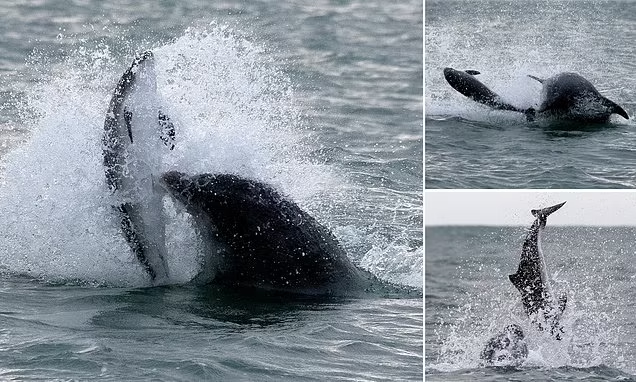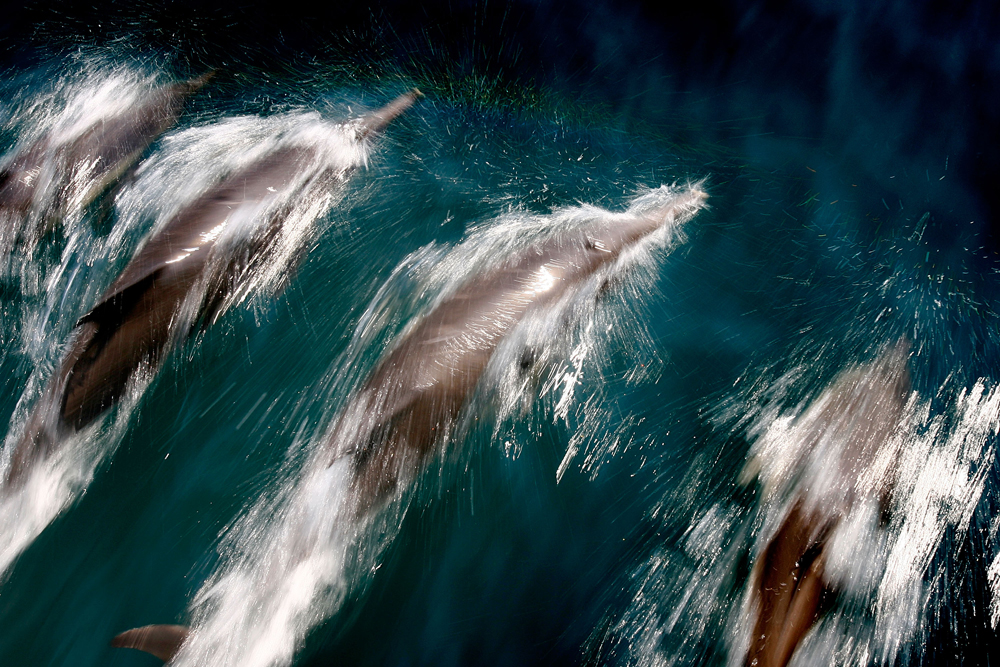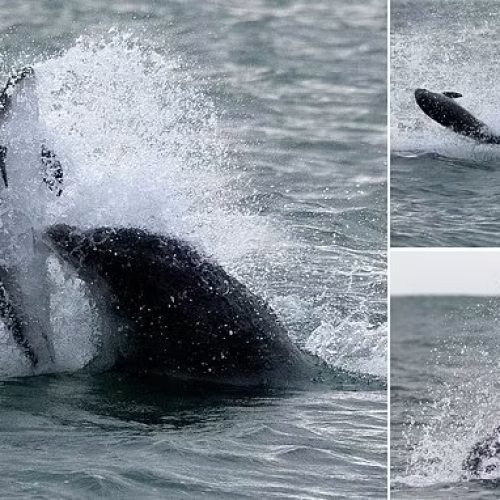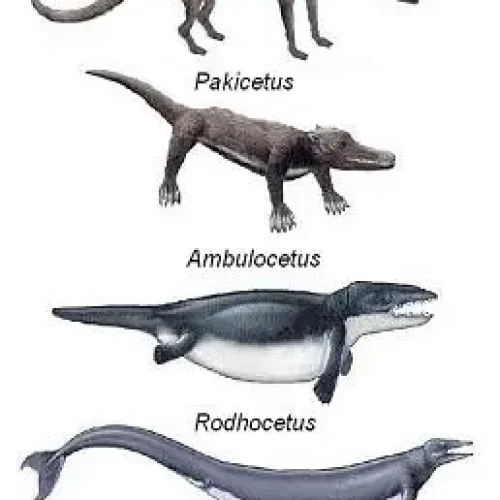Have you ever watched dolphins break the surface of the water and wondered why they interrupt their graceful underwater swimming? Far from being a mere whim, this behavior actually fulfills vital needs.
Discover the three crucial reasons that compel these fascinating marine mammals to regularly rise to the surface, from the necessity of breathing to the subtle art of communication and the ingenious trick they use to regulate their body temperature.

In this article
BREATHING: A LIFE-SUSTAINING NECESSITY
Unlike fish, dolphins are mammals that rely on lungs to breathe air. They lack gills, the specialized organs that allow most aquatic animals to extract oxygen directly from the water. As a result, dolphins must regularly surface to fill their lungs with fresh air.
Dolphins have evolved a unique breathing technique to efficiently inhale and exhale when they breach the surface. Located on the top of their head is a blowhole, which acts as their nostril. When a dolphin surfaces, it rapidly expels the used air from its lungs through the blowhole and then quickly inhales fresh air before submerging again.
According to a study published in the Journal of Experimental Biology, bottlenose dolphins can exchange up to 90% of the air in their lungs in a single breath, showcasing their respiratory efficiency.
THERMOREGULATION: MAINTAINING BODY TEMPERATURE
As warm-blooded animals, dolphins need to maintain a constant internal body temperature regardless of the surrounding water conditions.
While their thick layer of blubber provides insulation, dolphins still require additional thermoregulation strategies, especially when water temperatures are high or during periods of increased physical activity.
Surfacing allows dolphins to release excess heat and regulate their body temperature. When a dolphin breaks the surface, the water on its skin evaporates, creating a cooling effect.
This evaporative cooling process is particularly important for dolphins in tropical and subtropical waters, where water temperatures can approach their core body temperature.
Moreover, dolphins have a complex network of blood vessels in their fins, flippers, and flukes (tail).
By circulating blood through these appendages and exposing them to the air when surfacing, dolphins can dissipate heat and prevent overheating. This adaptation is crucial during high-speed swimming or intense physical activities that generate significant body heat.
COMMUNICATION AND SOCIAL INTERACTION
Dolphins are highly social creatures that rely on communication to maintain strong bonds within their pods. Surfacing plays a crucial role in facilitating both vocal and physical interactions among individuals.
When dolphins come to the surface, they often engage in vocalizations that can be heard above the water.
These sounds include whistles and clicks, which are used for various purposes such as identifying individuals, conveying emotional states, and coordinating group activities. Researchers have discovered that each dolphin has a unique signature whistle, similar to a human name, that is used for recognition and maintaining contact with pod members.
In addition to vocalizations, dolphins also communicate through body language and physical contact when they surface. Leaping out of the water, known as breaching, is a common behavior that serves multiple functions, including communication. Breaching can be used to signal excitement, attract attention, or intimidate rivals.
Playful interactions, such as rubbing fins or chasing each other, often occur at the surface and help strengthen social bonds within the pod.
ADDITIONAL REASONS FOR SURFACING
While breathing and thermoregulation are the primary reasons dolphins surface, there are several other factors that contribute to this behavior.
Navigating the vast oceans requires dolphins to orient themselves using various cues. When they surface, dolphins can use visual landmarks, such as coastlines or islands, to determine their location and navigate their surroundings.
Some species, like the bottlenose dolphin, have even been observed using celestial cues, such as the position of the sun or stars, for navigation.
Dolphins, like all mammals, require rest and sleep to maintain their health and cognitive functions. However, their unique respiratory system necessitates a different sleeping strategy compared to land mammals.
Dolphins engage in unihemispheric slow-wave sleep, where one half of their brain remains active while the other half rests. During these periods, dolphins must continue surfacing to breathe, as their breathing is a conscious process.
Surfacing also plays a role in dolphins’ foraging and hunting behaviors. By coming to the surface, dolphins can spot potential prey, such as fish or squid, from above. Some species, like the dusky dolphin, employ cooperative hunting techniques where individuals work together to herd schools of fish towards the surface, making them easier to catch.
Surfacing allows dolphins to take advantage of their excellent vision and coordinate their efforts to maximize hunting success.








